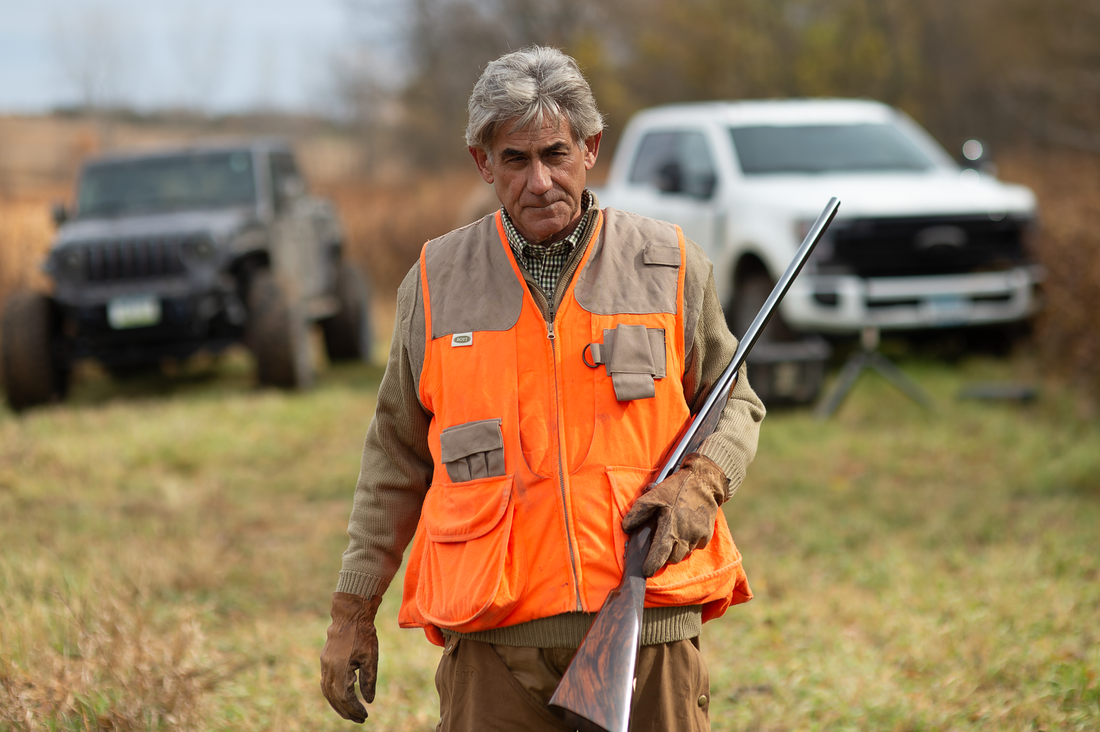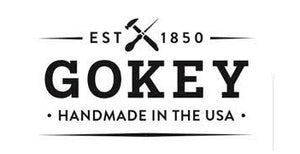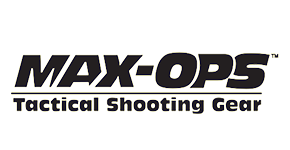"110 years of Sporting Tradition" Boyt Harness Company, the hunting industry standard for gun cases and firearm storage and transport, traces their beginnings to a family owned regional harness shop in turn of the century Iowa. These kinds of firearms storage facilities have gained approval from the safe experts who specialize in firearm storage. In 1885 a young Englishman named Walter Boyt set sail to America to find his calling in life. Meeting up with his brother John in Des Moines, the pair settled into the well-worn workbenches of Des Moines Saddlery Company, learning the time-honored trade as saddle makers and leather workers. Started in 1881, Des Moines Saddlery sat at the confluence of two major rivers and 13 rail lines giving the company a competitive transportation edge over competitors.
The ideal location was not lost on the aspiring Boyt brothers. Between long days of sorting hides, making patterns, tooling leather and then sewing it on massive belt driven machines, the Boyt brothers found time to travel back to England, enjoy the Iowa rural lifestyle and socialize in the many gathering places along Des Moines' Court Avenue district. Walter married and started a family that would eventually include six daughters, known throughout Des Moines as the "Beautiful Boyt Sisters." After twenty years in business, Des Moines Saddlery closed their doors and the industrious Boyt brothers decided to continue building saddles and harness as proprietors rather than employees with the founding of Walter Boyt Saddlery in 1901.The business was moved just a few blocks east, still close to both the rivers and the rail yards. With his business savvy wife Mary as vice president and brother, John, as book keeper and trusted advisor, Walter's burgeoning enterprise primarily manufactured fine driving harness for buggies, however, the Great War in Europe took the company in a direction that would frame it for the next 100 years.
The advent of World War I found the company building the first of many firearm accessories such as military pistol holsters for the then new Colt 1911 .45 pistol along with cavalry saddle bags and harness for artillery and transport horses. In 1925, Walter Boyt decided to sell the company to John Boyt and his three sons, Joseph Walter, Arthur John, and Paul Alfred Boyt. The name was changed from The Walter Boyt Saddlery Company to The Boyt Harness Company and a new generation of Boyt brothers continued the tradition of making harness, saddles, bridles and tack for farmers and stockman across the Midwest. Struggling through the Great Depression and the dust bowl years, Boyt Harness Company developed a reputation for quality and delivery second to none and farmers across the country proudly tacked their draft teams in well oiled Boyt harness and collars each morning but the Japanese attack on Pearl Harbor begin another shift to production for the war effort.
From 1941 through 1945, The Boyt Harness Company produced millions of pieces of equipment destined for American offensives in both the European and Pacific theaters as tens of thousands of teachers, farmers, office workers and tradesmen were transformed into the largest standing fighting force in the nation's history. Some of those soldiers were local kids from the neighborhoods to the south and east of the factory, including the large Italian American community of Des Moines south side, directly across the river from Boyt. "My uncles, who served with the First Marine Division and the 3rd and 4th Raider Battalions, were combat marines who made the landings at Pelelieu, Guadalcanal, Bougainville and Okinawa" said Tony Caligiuri, president of Boyt Harness, "On their transport ships to the Solomon's, they were pleasantly surprised to find much of the gear they were issued had been made at the bustling harness factory just a few blocks from their house.
I still have my Uncle Frank's theatre modified Marine bolo in a Boyt sheath that he wore next to his Raider stiletto," recalled Caligiuri. In fact, combat Marines generally were issued more than a dozen pieces of gear that was produced by Boyt including their backpacks, web belts, cartridge pouches and M-1 Garand slings. There was a saying in the factory that Japanese soldiers had never seen a Boyt backpack because United States Marines never retreated. At one point, war production required 2800 workers and Boyt became one of the largest manufacturing operations in Iowa.
After the war, Boyt shifted production back to saddles and harness, but the mechanization of America had put most of the work horses out to pasture. For the first time, sporting goods became a priority and gun cases, hunting vests and cartridge bags begin to make up the majority of production. The Boyt Five Star canvas case, named for the five award stars that the company had been presented for their production efforts during the war years, was quickly heralded as the premier method of firearm storage of the times, a position that Boyt has maintained for almost 70 years.
Sadly, this period also marked the passing of the founders, both John and Walter Boyt. Though gun cases and other sporting products were the main production focus, the company continued to make saddle and tack into the late 1950', eventually selling the business to Welsh Sporting Goods in 1963. The 1960's saw the company move their headquarters and production from Des Moines to Iowa Falls, Iowa along with the creation of Boyt Luggage Company and an expansion into the growing soft sided luggage market. In 1996, a small group of investors purchased the sporting goods division from Welsh Sporting Goods and moved operations for all hunting and shooting products to an existing Boyt facility in Osceola, Iowa. Honoring the heritage of the company's history, the new venture became once again known as The Boyt Harness Company.
Building upon Boyt's dominance in the high end gun case and accessory markets, the company begin to acquire other top sporting brands starting with the acquisition of Bob Allen Sportswear in 1997. Bob Allen Company was started in a parachute shop on the tiny Pacific atoll of Tinian towards the end of World War II. Bob Allen was a young, nationally known, clay target shooter before the war, who later parlayed his aerial gunner instructor duties into a combat assignment in the South Pacific. Bob's first product design was a long billed cap that helped keep the sun out of bomber crews' eyes on their long flights to mainland Japan. Trading a ration of wartime Scotch in the parachute shop for each one of his prized hats, the Bob Allen Company was born. After the war, the hats found favor with shooters and soon Bob was selling hats, shooting vests, pouches and bags from the trunk of his car as he traveled the shooting circuit. Opening the first retail store on the grounds of the Grand American Trapshoot, designing the first shooting vest, and the first non-military camouflage pattern were just a few of Bob Allen's "firsts". Sadly, Bob was killed in a car accident in November of 2004, but his legacy still lives on through the brand he started almost 70 years ago. Acquisitions since that time have included the Rattler's and Bug Out brands of protective clothing for the outdoorsman, Secure Vault, personal security and hand gun storage systems, Mud River Dog Products, and the Outdoor Connection. Mud River Dog Products builds innovative and high-quality accessories for dog training and the hunting world. From puppies to full grown dogs, Mud River has beds, bowls, collars, and everything in between to keep your dog happy, healthy, and hunting.
The Outdoor Connection, a long time firearm's accessory manufacturer is based in Waco, Texas. The Outdoor Connection was founded by Floyd and Pat Hightower in 1983 and is best known for their line of slings including the Original Super Sling and Padded Super Sling as well sling swivels including the Talon and Brute brands. More recently, the company expanded into gun cases, range bags and related accessories including tactical gear under the Max Ops brand. In addition to growing sales through acquisitions, the core Boyt brand has continued to expand as well, entering the injection molded travel case market with the introduction of the Boyt H-Case series. "As hard core travelling hunters, we all knew what we wanted in a hard sided case so the development of the H -Series hard cases was a natural step for us" said Pat Foley, Boyt's vice president of product development. "We took the injection molded hard case to the next level, our steel draw latches keep the case closed during rough transport conditions and our custom resin formulation gives the case a tensile strength that is not effected by weather extremes."
Though some hunters may complain about packing a heavy injection molded gun case through airports and parking lots, the wheels on the larger cases make it a snap and the weight is actually the key to success. "Weight absorbs impact" says Foley, "You have to have weight to absorb shock so the impact is dampened by the case and not transferred to the rifle optics. We have dropped cases from twenty feet with no cross hair damage or movement on a variety of scope brands and types. The physics are fairly straight forward." Many hunters are worried that we would be unable to cope with the wide variety of different scopes and brands for their rifle, however, this isn't something that they need to worry about when it comes to our gun cases. The H-cases feature high density, easy to customize foam, a dust and water proof O-ring seal, and a built-in pressure relief valve that equalizes pressure on the inside of the case. It's true stackable design makes storing multiple cases a space efficient snap. Larger models have heavy-duty in-line wheels for easy maneuvering. The case's most unique feature is the time proven draw latches that keep the case closed and sealed tight under even the most extreme conditions. Each case features two pad lock boss areas to facilitate secured travel and safety as well.
The Boyt life-time warranty on gun cases is another part of the Boyt tradition, dating back more than 50 years. Boyt cases are made to last and each year, the factory receives several cases in for repair that have been passed down from grandfather to grandson. Since 1901, Boyt has worked hard to provide rugged and dependable equipment, accessories and clothing for all hunting and shooting enthusiasts. All of our products are carefully crafted with durable materials to withstand even the most challenging conditions for years of enjoyment. It is not easy setting the standard for quality, but it is a role that they have grown accustomed to after more than 100 years in the business.









